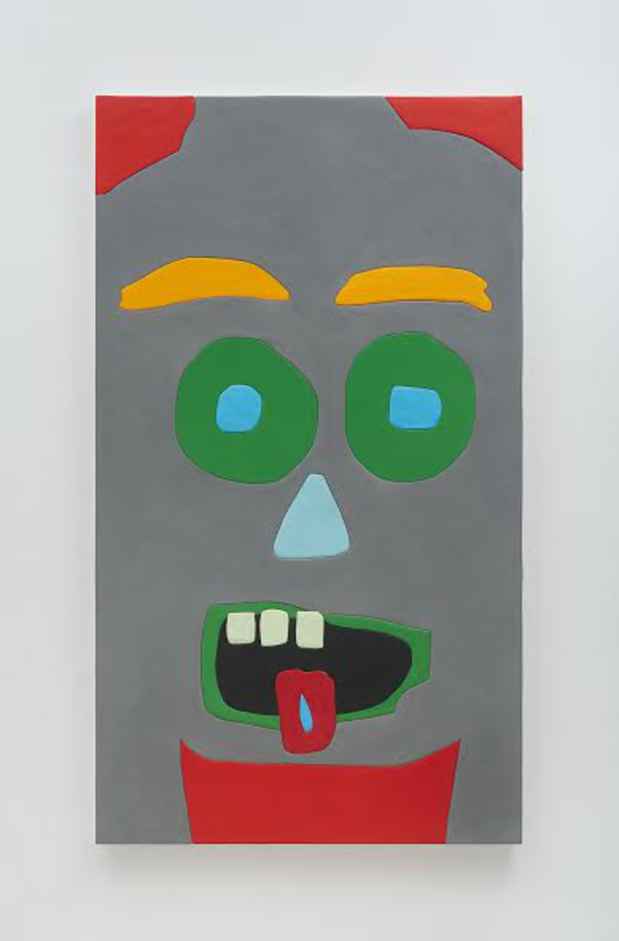Sadie Benning “Green God”
Callicoon Fine Art

This event has ended.
Callicoon Fine Arts presents Green God an exhibition by Sadie Benning, in collaboration with Mary Boone Gallery where the show continues at 745 5th Ave curated by Piper Marshall.
In Green God, as in previous exhibitions by Benning, themes are built upon associations between form and content. The works incorporate aspects of painting, sculpture and photography. The artist shifts between mediums as a way of confronting the artificiality of the distinctions between them while also exploring the relationships inherent in the seemingly disparate parts.
The multiple significations of color, specifically green (as nature, as a color of money, as symbol of greed and envy), are grounded both within the materiality of the works and in their attendant conceptual concerns. Since green can hold contradictory significations, it parallels the contradictions that are inherent in belief systems, opposite forces that ultimately uphold power. But the exhibition attempts a way out of this trap by simply pointing at the problem, and inserting it into the open and divided experiential field of the exhibition.
Painting itself occupies the place of the fetish in Airplane Painting. A series of five hand-painted abstractions, intimately scaled “real” paintings on panels, are inserted into the larger jigsawed work representing an equal number of somewhat uniform airplane shapes in black, moving across the large white negative ground. Each “real” painting is carried on the wing of a plane, animating the mechanical modes of distribution. The method of insertion is taken a step further at Mary Boone Gallery where devotional objects and photographs are incorporated into the compositions, blurring the distinction between what is molded and what is handmade.
The small “real” paintings and found objects play on the meaning of the fetish as both a place-holder for the true object of desire and the commodity as product of human labor. To point to the psychological and manual activities that ascribe power to the fetish as such is to undo its power of symbolization and mystification. One peg that holds together the system of belief is removed.

Hanging next to Airplane Painting is The Crucifixion, an image of a female figure where a male figure would be expected to be seen. The works cutout technique results in a highly graphic format that lends itself easily to the making of graphical symbols. In this case, Benning adopts the gendered bathroom graphic indicating “women” to the iconography of the crucifixion. The crucified woman appears pregnant, or the pronounced baby bump may be her butt protruding as she twists on the cross.
Male or female, baby bump or butt: these are bodily orientations taken for facts held firm within culture, but that are repositioned in Benning’s works as matters of perception. A privileged order is upended. A painting titled Nature in this room highlights the perceptual dependency by appearing to be an abstraction, a kind of swirl of natural forms that may resolve, for some viewers, into an image of a wolf or a dog attacking. The red areas may be fallen leaves or pools of blood; the white dabs of light on the forest floor could be fragments of a face.
Perception takes on the authority of belief in a large artwork titled Crowd. The entirety of this ambitious work is comprised of hundreds of cut-out components painted white with an aura of reptilian neon greens and pinks that cast their iridescent hues from the in-between spaces or shadows of the artwork, destabilizing ideas of whiteness as pure or natural. Drawn from an image of an audience at a rock concert, people gathered shoulder to shoulder but absent any details, the many shapes could also represent tombstones, ghosts or phantom followers.
Through color and line, Benning links Crowd to a work in the rear gallery titled Mic which depicts a person whose face is obscured by long shaggy hair as they approach a microphone, taking agency in the moment, offering testimony, about to give voice. The work is grouped in the room with two other works, Guts and Sunset. The bodily site is therefore associated with cycles of time and becoming, offering instinct and feeling as an antidote to the notion of a fixed god.
Sadie Benning was born in Madison, Wisconsin in 1973 and currently lives in Brooklyn, NY. Benning’s work has been exhibited internationally since 1990 and is in many permanent collections, including those of the Museum of Modern Art, The Centre Pompidou, The Whitney Museum of American Art, The Museum of Contemporary Art Los Angeles, The Hammer Museum, The Fogg Art Museum, and The Walker Art Center. Recently Benning’s work was including in Greater New York, MoMA PS1, Painting 2.0: Expression in the Information Age, Museum Brandhorst, Munich and MuMOK, Vienna, The Carnegie International, Carnegie Museum of Art, and Tell It To My Heart: Collected by Julie Ault, Kunstmuseum Basel and Artists Space. Benning’s work has also been included in Annual Report: 7th Gwangju Biennale; Whitney Biennial (2000 and 1993); American Century, Whitney Museum; and the Venice Biennale (1993). Solo exhibitions include Callicoon Fine Arts, Susanne Vielmetter Projects Los Angeles, Participant, INC., Wexner Center for the Arts, Orchard Gallery, Dia: Chelsea and The Power Plant.
Media
Schedule
from April 28, 2016 to July 29, 2016
Closing Reception on 2016-07-29 from 18:00 to 20:00